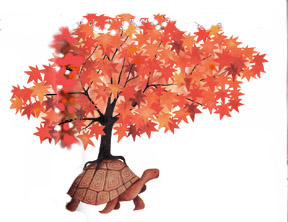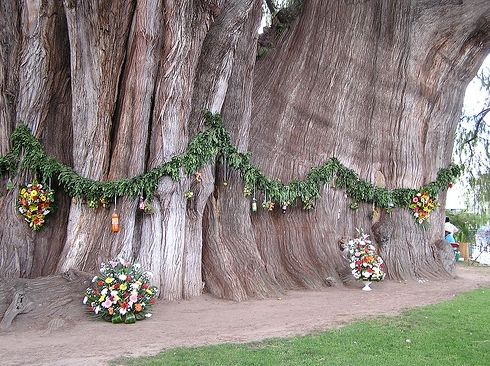

The Great Tree
Written and researched by Margaret Odrowaz-Sypniewska, B.F.A.

The Great Tree or World Tree is a part of most of the Native American Indian traditions and mythology. In Iroquois beliefs, the Great Tree is a very popular artistic expression. The Great Tree symbolizes the new beginning of the Iroquois Nations. The Great Tree of Peace was planted in the Onondaga Nation. The Great Tree had its parallel in the tree of the sky whose roots opened up a hole in the heavens. This tree gave entry to the beginning of life on earth. In the Iroquois tradition, Great Peace came when they uprooted the tallest pine tree and threw their weapons of war into the cavity. This act signified that the Confederacy Nations would never take up arms against each other.
The Great Tree is a popular theme in paintings and wood and soapstone carvings of the Iroquois. The painting above depicts the Sugar Maple as the Great Tree. The gathering of sugar maple was a big part of old Native American Traditions. The maple is a deciduous tree while the Pine Tree (another popular tree used as the Great Tree) was evergreen. Depending on the teachings there are folk tales regarding both these trees. The Great Tree is always shown growing out of the back of the Turtle (Mother Earth). Turtle Island was North America in Iroquois beliefs.
In Meso-America, the cardinal directions were associated with a broad spectrum of things from both the natural and cultural worlds. The World Tree expressed the four-fold nature of a single great tree, or axis mundi, located at the center of the world.
The Yucatecan Maya, called this tree the yaxche or Ceiba, which is the national tree of Guatemala today. Its roots are in the underworld, and its branches are in the heavens. The Maya call the yaxche the first or green tree. Green is associated with a central place in their culture. Much like their plazas are a green oasis within all their cities. In the Chilam Balam of Chimayel. the four imix yaxche represented the four corners of the world. Each world was associated with the four cardinal and directional colors: red, white, black, and yellow (north, south, east, and west). Often the World Tree is depicted with birds and "trees of Life" are a popular ceramic image in their folk art. In modern times, Adam and Eve are depicted below these trees.

The most remarkable tree in all of Mexican is the Tule Tree. The Oaxaca City people call it "El Arbol de Santa Maria de Tule." It is in front of the Santa Maria Church. The Tule Tree is thought to have been in its location since the birth of Christ. This is a popular pilgrimage place. Cortes was reputed to have sat under this large tree. The Tule tree is a Montezuma Cypress (Taxodium muronatum).
Another sacred tree in the churchyard of Izucar de Matamoros, Puebla, Mexico, was cut down in 1914 by the parish priest, in order to end certain pagan rituals.
Examples of the Mexican Artist's Trees of Life:
Kapok trees were considered sacred in the Aztec culture. The "Three Worlds" were united by the ceiba (kapok) tree. The center of this world was the ceiba tree, with the roots in the underworld and branches in the heavens. The crown of the "Tree of Life" towers above the forest canopy and was united with the temples which joined all three worlds:
SOURCES:
Minnis, Paul E. and Wayne J. Elisens. Diodiversity and Native America. Norman, OK.: University of Oklahoma Press, 2000.
This page was last updated on October 20, 2014
